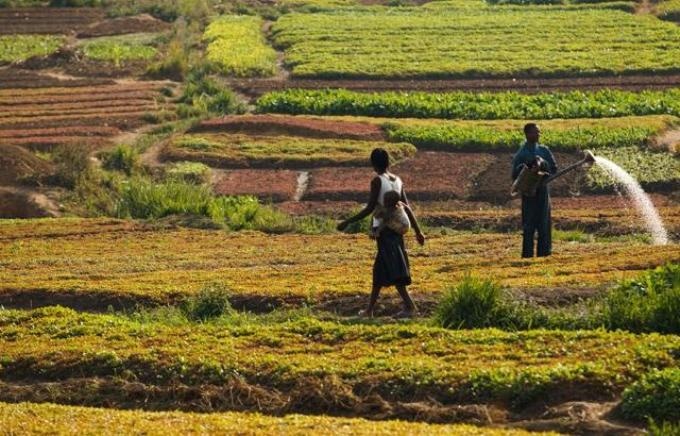Aug 30 2016
As humans pump carbon dioxide into the atmosphere and global temperatures rise, many questions loom. One major issue is how much fresh water will be available for people, forests and agriculture.
 This field near Lubumbashi, in the Democratic Republic of the Congo, is in the area where reduced water needs by plants may counteract the drying effect from climate change. (CREDIT: United Nations Food and Agriculture Organization)
This field near Lubumbashi, in the Democratic Republic of the Congo, is in the area where reduced water needs by plants may counteract the drying effect from climate change. (CREDIT: United Nations Food and Agriculture Organization)
A study led by the University of Washington shows that popular long-term drought estimates have a major flaw: They ignore the fact that plants will be less thirsty as carbon dioxide rises. The study shows that shifts in how plants use water could roughly halve the extent of climate change-induced droughts.
“Plants matter,” said Abigail Swann, a UW assistant professor of atmospheric sciences and biology. “A number of studies assume that plant water needs are staying constant, when what we know about plants growing in lots of carbon dioxide suggests the opposite.”
Swann is lead author of the study published the week of Aug. 29 in the Proceedings of the National Academy of Sciences.
Recent studies have estimated that more than 70 percent of our planet will experience more drought as carbon dioxide levels quadruple from pre-industrial levels over about the next 100 years. But when Swann and her co-authors account for changes in plants’ water needs, this falls to 37 percent, with bigger differences concentrated in certain regions.
“It’s a significant effect,” Swann said.
The reason is that when Earth’s atmosphere holds more carbon dioxide, plants actually benefit from having more of the molecules they need to build their carbon-rich bodies. Plants take in carbon dioxide through tiny openings, called stomata, that cover their leaves. But as they draw in carbon dioxide, moisture escapes. When carbon dioxide is more plentiful, the stomata don’t need to be open for as long, and so the plants lose less water. The plants thus draw less water from the soil through their roots.
Global climate models already account for these changes in plant growth. But many estimates of future drought use today’s standard indices, like the Palmer Drought Severity Index, which only consider atmospheric variables such as future temperature, humidity and precipitation.
“I had a very strong suspicion that you would get a different answer if you considered how the plants were responding,” Swann said.
The study compares today’s drought indices with ones that take into account changes in plant water use. It confirms that reduced precipitation will increase droughts across southern North America, southern Europe and northeastern South America. But the results show that in Central Africa and temperate Asia — including China, the Middle East, East Asia and most of Russia — water conservation by plants will largely counteract the parching due to climate change.
Planners will need accurate long-term drought predictions to design future water supplies, anticipate ecosystem stresses, project wildfire risks and decide where to locate agricultural fields.
“In some sense there’s an easy solution to this problem, which is we just have to create new metrics that take into account what the plants are doing,” Swann said. “We already have the information to do that; we just have to be more careful about ensuring that we’re considering the role of the plants.”
Is this good news for climate change? Although the drying may be less extreme than in some current estimates, droughts will certainly increase, researchers said, and other aspects of climate change could have severe effects on vegetation.
“There’s a lot we don’t know, especially about hot droughts,” Swann said. The same drought at a higher temperature might have more severe impacts, she noted, or might make plants more stressed and susceptible to pests.
“Even if droughts are not extremely more prevalent or frequent, they may be more deadly when they do happen,” she said.
The co-authors are Forrest Hoffman at Oak Ridge National Laboratory, Charles Koven at Lawrence Berkeley National Laboratory and James Randerson at the University of California, Irvine. The research was funded by the National Science Foundation and the U.S. Department of Energy.